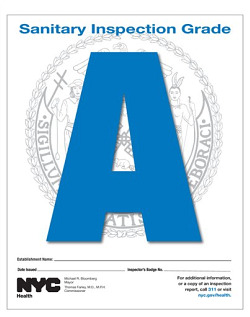 Eye Heart New York has a post with a graph showing the distribution of health code violations and the letter grades they received. Kaiser at Junk Charts takes the original data and makes a few graphs of his own. Based on those visualizations it seems that there is not much difference by borough or by cuisine.
Eye Heart New York has a post with a graph showing the distribution of health code violations and the letter grades they received. Kaiser at Junk Charts takes the original data and makes a few graphs of his own. Based on those visualizations it seems that there is not much difference by borough or by cuisine.
This is similar to a system in LA and Singapore, though something tells me an ‘A’ in NY is still only a ‘B’ in Singapore. The picture below is from an ‘A’ restaurant in Singapore which was so clean that I had no problem eating off a banana leaf.
New Yorkers, known for being tough, might not be deterred even by ‘C’ grades. Commenters on Serious Eats seemed to relish eating in a ‘C’ joint as it lends greasy, authentic goodness to a place.


Jared Lander is the Chief Data Scientist of Lander Analytics a New York data science firm, Adjunct Professor at Columbia University, Organizer of the New York Open Statistical Programming meetup and the New York and Washington DC R Conferences and author of R for Everyone.




 Temple
Temple



